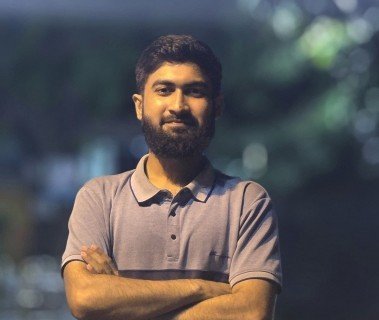In the heated days of July, when student protests turned into one of the most significant youth-led uprisings in recent Bangladeshi history, Abdullah Al Mahatir stood at the heart of the storm. A member of the Program and Plan Implementation Cell of the ‘Students Against Discrimination’, Mahatir’s involvement began quietly, on the campus of the University of Chittagong, but soon evolved into a citywide mobilization that shook the foundation of the status quo.
He first joined the protests at the university’s Shaheed Minar, when the anti-quota movement was still loosely organized and sporadic. Around the same time, public university teachers had gone on a strike protesting the Universal Pension Scheme. With academic activity at a standstill, students found themselves with the time and urgency to mobilize full-time for a cause that was rapidly gaining emotional and political traction.
As government responses continued to lack clarity and commitment, students began to organize more systematically. The movement soon adopted the name ‘Students Against Discrimination’, symbolizing a broader struggle against systemic inequality. One of the turning points was the formation of a planning group in Room 158 of Suhrawardy Hall, where Mahatir, along with R. M. Rashidul Haque Dinar, Mahfuzur Rahman, and Abdullah Mohammad Zubair, brainstormed ways to take the movement beyond the boundaries of the campus.
They arranged a secret meeting at the Shaheed Buddhijibi Chattar where representatives from different faculties were chosen, and strategies were drawn up for expanding the protest to colleges, universities, and the streets of Chattogram. On July 5, the student movement began moving into the city. Strategic locations such as Biplob Udyan, Gate no 2, Sholoshahar Railway Station, Tiger Pass, and the Dhaka-Chattogram railway line quickly became hotspots of unrest.
Tensions escalated rapidly. On July 11, violent attacks on Chittagong University students at several locations sparked outrage. The following day saw one of the largest protest marches in Chattogram in recent history; so large, in fact, that even activists from the ruling student front reportedly joined the procession.
July 14 marked another milestone, with students organizing a symbolic march and submitting a memorandum to the President. But what followed was brutal. On July 15, in Sholoshahar, a peaceful student rally was attacked, allegedly under the leadership of Chhatra League’s Nurul Azim Rony. Two days later, Mahatir found himself with nothing but pieces of rock from a railway track to defend against an onslaught. On that same day, two protesters, Shanto and Wasim, lost their lives.
The movement only grew more intense. Sites like Muradpur, Bahaddarhat, Shah Amanat Bridge Circle, New Market Circle, Lal Dighi Maidan, and Court Building grounds emerged as flashpoints. On the night of July 14, after thunderous chants of “Rajakar Rajakar,” the university campus emptied out. But following the violence on the 16th, Mahatir and others returned, only to face further threats. On July 17, he was forced to flee campus after receiving death threats, going underground, frequently changing homes and SIM cards to avoid being tracked. Communication among key organizers continued late into the night via a secure online group named ‘QMT’ (Quota Movement Team).
While spending time in Dhaka under curfew, Mahatir witnessed the scale of state repression firsthand. Posing as a patient, he wandered the capital’s alleyways at night, avoiding surveillance. Outside Anwar Medical College and LabAid Hospital in Dhanmondi, he saw four civilians gunned down in broad daylight; reportedly from helicopter fire. It became clear to him then that the movement had already evolved beyond a protest; it had become a national uprising.
Returning to Chattogram on July 28, Mahatir rejoined the protests. On August 2, from the New Market Circle, a historic moment unfolded, the first unofficial declaration of a one-point demand: the resignation of the prime minister. Although August 3 saw limited response nationwide, Chattogram’s streets overflowed with student protesters, a wave of unity and hope that electrified the city.
But that hope met fierce resistance. On August 4, as students gathered at New Market Circle for a pre-declared program, ruling party activists and affiliated groups announced a counter-demonstration. Students initially held the ground, but waves of police and political attacks forced them to disperse. The struggle continued all day, until evening fell and the army stepped in, standing symbolically with the students. With their presence, the clash subsided, and attention turned toward the capital and the nationwide call for a “March to Dhaka.”
Eventually, the government was toppled. But the revolution’s promise of institutional reform faced immediate obstacles. According to Mahatir, the old political culture obsessed with power and party loyalty reasserted itself, preventing the reconstruction of state institutions. He worries that without real reform and political unity, the country may once again be pushed toward another chapter of struggle.
For Mahatir, the July uprising was not just a political event, it was a deeply personal journey of risk, sacrifice, and awakening. It left him with scars and memories that may never fade, but also with a vision: a more just, equal, and accountable Bangladesh. Whether or not that vision is realized, one thing is certain; he and countless others etched their names into the pages of a movement that dared to dream and fight for change.



